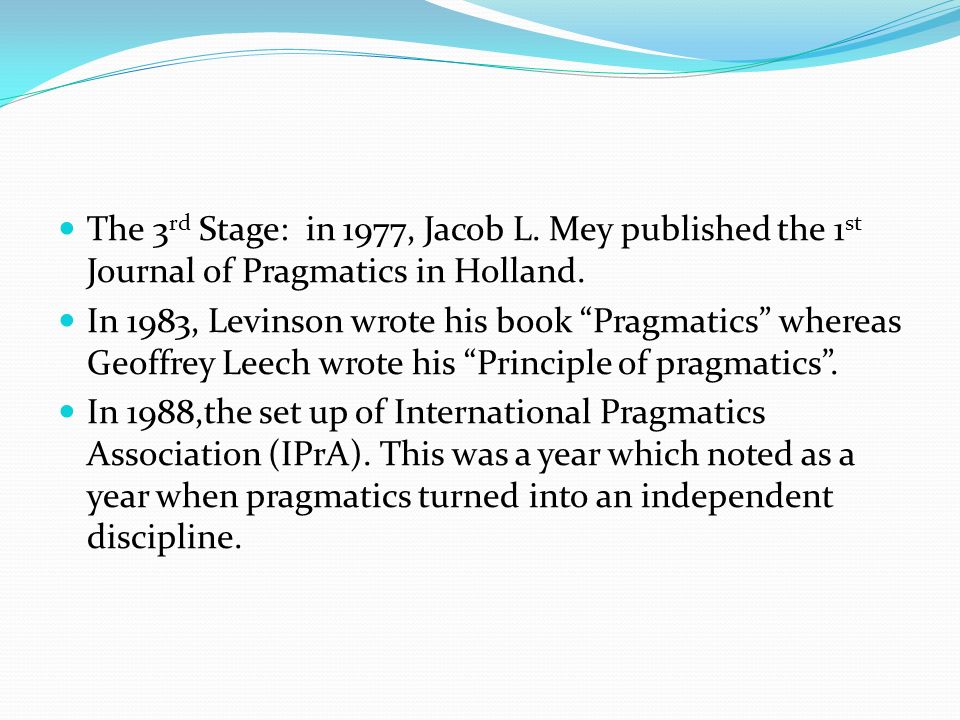
The study of relative distance, both social and physical, between speakers in order to understand what determines the choice of what is said and what is not said.The study of implicatures: the things that are communicated even though they are not explicitly expressed.It requires knowledge of the speaker's identities, and the place and time of the utterance. The study of the meaning in context and the influence that a given context can have on the message.The study of the speaker's meaning focusing not on the phonetic or grammatical form of an utterance but on what the speaker's intentions and beliefs are.The field did not gain linguists' attention until the 1970s, when two different schools emerged: the Anglo-American pragmatic thought and the European continental pragmatic thought (also called the perspective view). Meanwhile, historical pragmatics has also come into being. However, it rejected the notion that all meaning comes from signs existing purely in the abstract space of langue. Pragmatics first engaged only in synchronic study, as opposed to examining the historical development of language. In many cases, it expanded upon his idea that language has an analyzable structure, composed of parts that can be defined in relation to others. Pragmatics was a reaction to structuralist linguistics as outlined by Ferdinand de Saussure. ( April 2018) ( Learn how and when to remove this template message) Unsourced material may be challenged and removed.


Please help improve this article by adding citations to reliable sources.

This section needs additional citations for verification.


 0 kommentar(er)
0 kommentar(er)
